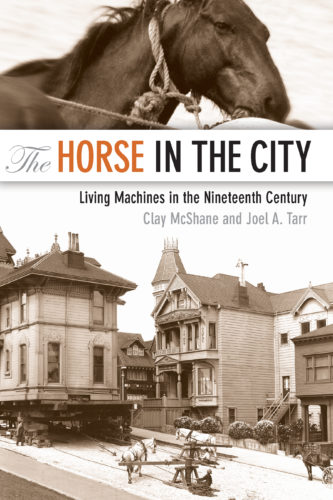An oft-cited reason to stop riding horses in cities was their prodigious output of excrement as a by-product, not to mention disposal of dead and rotting horse carcasses.

Both of these could have been easily solved problems (Golden Gate Park owes its lush environment to train carloads of manure being dumped on sandy dunes — fertilizer being in high demand for urban better quality of life).
Though no reliable estimate of the amount of horse-excrement collected for park fertilizer exists, the total undoubtedly ran into tens, even hundreds of thousands of tons.
Instead the legged mobility of horses was scrapped in favor of augmentation (legs pushing wheels) with bicycles. A cost model being so much better meant it was more equitable transit, and this opened up markets to more people working in more places… bicycles were en route to a greater future.
Then the “wheelmen” got a bright idea of putting paved roads everywhere to ease legwork (again a problem to be better solved, probably by improving bicycle technology instead) and suddenly giant automated carriages (cars) started taking over and demanding both legged and augmented legs get off the roads.
But instead of composting natural manure and carcasses, automobiles spread toxic disease-inducing chemicals and piles of dangerous waste.
Today we’re back to asking if legs can perform long distance travel, perhaps making the obvious point that cars were a bad idea from the start.
Instead of dumping manure after eating loads of grass, however, these legs drain an unbelievable amount of robotic electricity (which could end up as emissions if we’re not careful).
As energy cost comes down through engineering (like how manure could have been engineered into fertilizer, from a cost to a profit) legs may return as the obvious better way of transit by removing any requirements for nasty roads.
Running 60 miles to work on beaches, through a forest and over mountains sounds a LOT better than sitting in a boring stuffed cage on a boring flat road full of other boring boxes. Here’s a video showing some progress towards that augmented future.